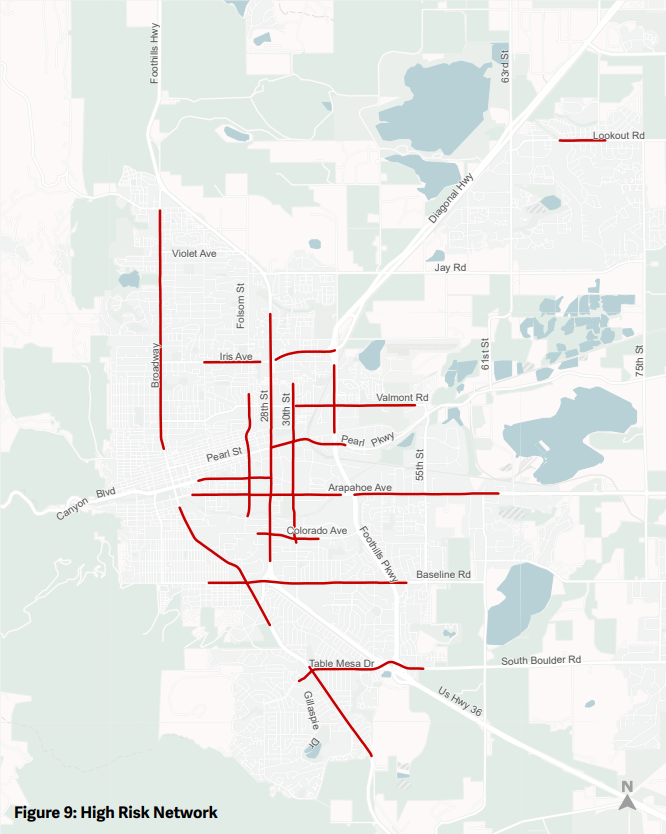The action plan includes four key recommendations for transportation safety.
Read on for highlights from the Vision Zero Action plan. The full draft plan [PDF] is also available online.
Vision Zero is the City of Boulder’s goal to eliminate all severe crashes (those that result in a fatality or serious injury).
The Vision Zero Action Plan identifies a prioritized list of actions that the City of Boulder will take between 2023 and 2027 to reduce severe crashes. The Plan builds on the successes of the last Vision Zero Action Plan (2019-2021), which include:
Changes at 49 intersections including traffic signal timing that prioritizes pedestrians, left-turn arrows, and signing/markings
Implemented “20 Is Plenty” speed limits on all residential streets
Advanced a program to incorporate improvements like protected bicycle lanes with annual pavement work
Won almost $5 million in grant funding from state and federal agencies that resulted in Safe Routes to School improvements, pedestrian crossings, sidewalks, new traffic signals, speed limit setting and other street design upgrades
Increased enforcement by installing red light cameras at three intersections to address drivers running red lights
The city developed the 2023-2027 Vision Zero Action Plan by incorporating:
Successes and lessons learned from the prior plan to make the new Vision Zero Action Plan more specific and actionable
The city's 2022 Safe Streets Report, which analyzed crash data and trends
Community engagement in summer and fall 2022, including a virtual open house, online survey and web map that received over 700 unique responses
New analysis to proactively identify locations with the most risk for crashes
Prioritization of a project list that accounts for project safety benefit, racial equity and community engagement feedback
The city will implement Vision Zero in four ways over the next five years:
Focusing improvements on Boulder’s corridors with the most risk for crashes, the High Risk Network (see map below)
Make changes to intersections and other locations where the most common crash types occur: red light running, left-turn crashes, crashes at right-turn slip lanes, right-turn on red crashes, other right-turn crashes, and crashes at pedestrian crossings
Coordinating Vision Zero projects with Boulder’s Core Arterial Network program, which improves connectivity and safety on key high-traffic routes
Pursuing regional, state and federal funding
Updating design practices, guidelines and policies

Regular collaboration with the Boulder Police Department regarding enforcement of behaviors of concern (speeding, traveling under the influence of alcohol or drugs, and distracted driving)
Deploying the photo radar van, and supporting legislation to enable its expanded use
Expanding the use of red light cameras
Implementing campaigns focusing on behaviors of concern
Ensuring Vision Zero strategies are included in all capital projects
Participating in the national Vision Zero Cities Network and other regional Vision Zero collaboration
Maintaining and updating the crash dashboard
Refining and improving the accuracy and utility of crash documentation
The city presented recommendations and project prioritization at a public meeting on February 7. City staff will present these proposed recommendations to the Transportation Advisory Board on March 13 and to City Council on April 6.
View the project webpage for more information, including the full plan, video summaries and the public meeting recording.